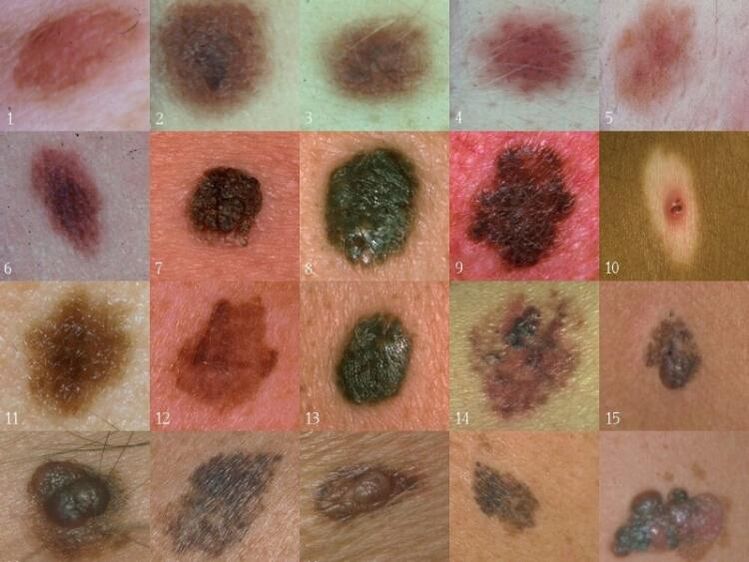
Some types of human papillomaviruses, penetrating into damaged areas of the skin, cause cells to grow rapidly in the upper layer. As a result, warts are formed. The types of warts can vary. They are formed on any part of the skin and can vary widely in size and color. Warts usually don't cause significant problems, they disappear on their own. However, in some cases it is worth seeing a doctor and getting them out.
The types of warts on the body are generally differentiated according to their distribution location.
Types of Warts
- vulgar (common)
- To plant,
- Flat (young),
- Genital warts (genital warts)
- Filiform,
- Senile (seborrheic keratomas).
common warts
Common or common - this is the most common type of these neoplasms. They are small nodules (up to 10 mm) with a rough surface. They protrude slightly above the skin's surface and are completely painless. Common warts form anywhere on the body, but most often they are on the neck, head, creases in the elbows or knees.
Another characteristic of common warts is their appearance close to large, "major" and smaller warts.
To plant
This is one of the common wart varieties, also called "Spitz". It is located on the skin of the foot, most often on the side of the sole of the foot. It consists of several papillae, fused together, surrounded by a roller. Spitz sometimes looks like a dense thorn that has grown in the skin. Sometimes, plantar warts can grow inside the skin. Then they look like a pit surrounded by a scroll with protruding papillae. Plantar warts often cause problems for people because they cause discomfort and even pain when walking.
Your training can be triggered by tight or uncomfortable shoes. In these shoes, areas of the skin are damaged and become more vulnerable to human papillomavirus penetration and development.
Plan
Flat warts are more common at an early age, in children and adolescents, and are therefore called juveniles. These are small formations (usually about 3mm). They can be round or irregular. The surface of juvenile warts is smooth and flat. The color is usually the same as the skin, sometimes flat warts may have a yellowish tinge. This type of wart can form anywhere on the skin, but its "favorite" places are the face and hands.
Flat warts usually don't cause physical discomfort and disappear over time. However, when placed in prominent locations, they cause aesthetic discomfort, so patients often see doctors and cosmetologists to remove them.
genital warts
These warts are located in the genital area and infection occurs through sexual contact. The most common spread of genital warts is the groin, penis, lips and anus. Also, this type of wart can form in the mouth.
Genital warts are small skin growths with a sharp tip, small papillae. These papillae fuse together and often look like cauliflower. The color of the genital warts is dark, pink skin color.
Treatment of genital warts is performed by dermatovenerologists with the participation of a gynecologist or urologist.
Filiform
Filiform warts (acrochords) are more common in older people. They are elongated growths that resemble a strand. The size of filamentous warts can be up to 1 cm. The location of the acrocord is the skin of the neck and face. Most of the time, they are formed on the eyelids, lips. There are filamentous warts in the armpits.
Crocords are often injured due to their elongated shape. By themselves, most of the time, they do not disappear, in addition, after removal, relapses often occur with the formation of new warts in the same places.
Senile
Seborrheic keratomas develop more often in old age due to changes in the skin. They are located anywhere on the body, but most often on the neck, arms, chest. These are small, flat papules with well-defined borders. Senile warts are most often yellow-pink or brown in color, their size is up to 2 cm. They can be unique and can form entire focuses. Dead skin cells form the basis of these neoplasms. At first they are soft, but over time they become dense, covered with cracks.
Senile warts require careful attention as they tend to become malignant.
So there are different types of warts. Most of them are harmless, but it's best to see a doctor without delay and make sure of it.














































































